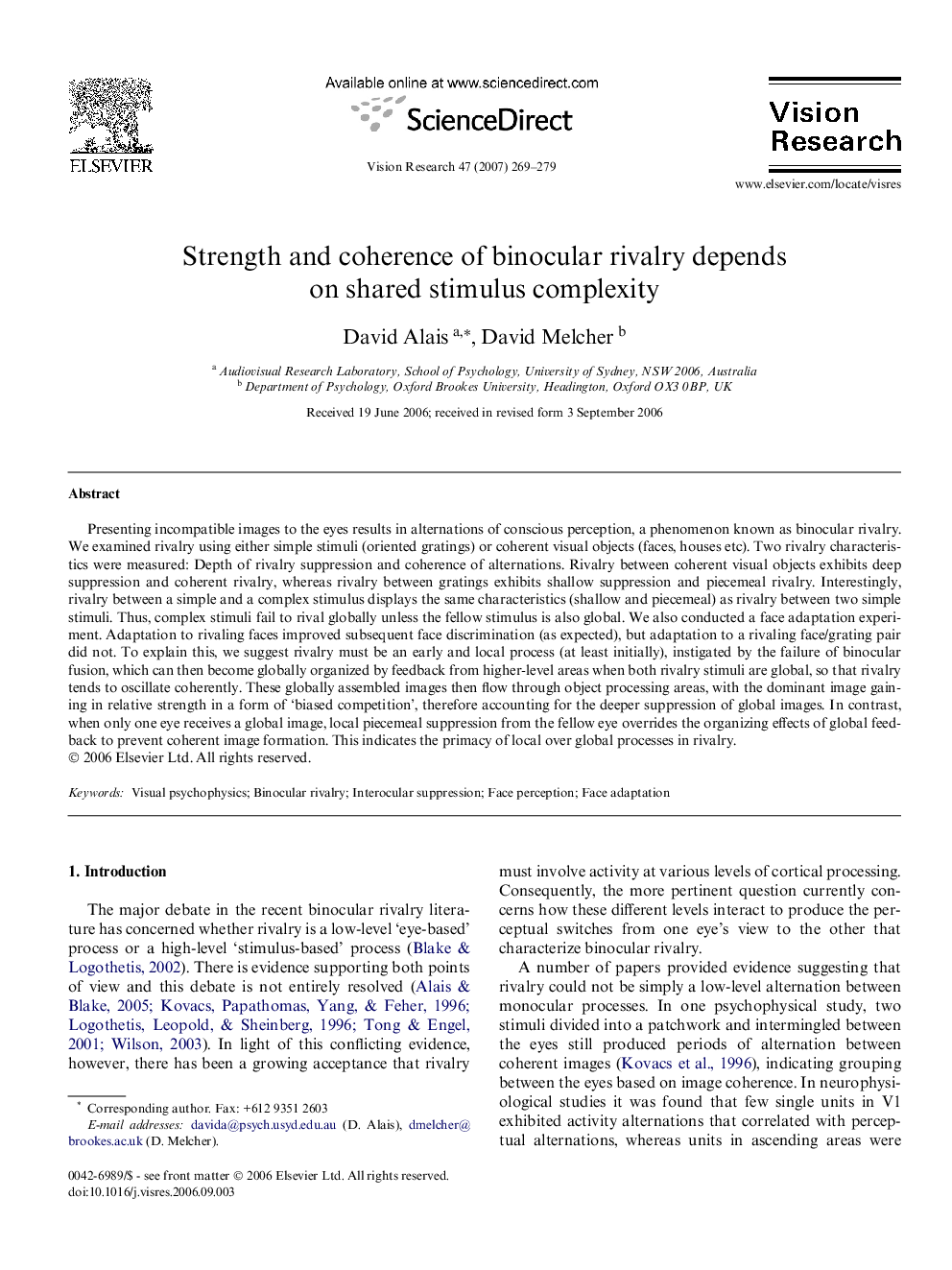| Article ID | Journal | Published Year | Pages | File Type |
|---|---|---|---|---|
| 4036012 | Vision Research | 2007 | 11 Pages |
Presenting incompatible images to the eyes results in alternations of conscious perception, a phenomenon known as binocular rivalry. We examined rivalry using either simple stimuli (oriented gratings) or coherent visual objects (faces, houses etc). Two rivalry characteristics were measured: Depth of rivalry suppression and coherence of alternations. Rivalry between coherent visual objects exhibits deep suppression and coherent rivalry, whereas rivalry between gratings exhibits shallow suppression and piecemeal rivalry. Interestingly, rivalry between a simple and a complex stimulus displays the same characteristics (shallow and piecemeal) as rivalry between two simple stimuli. Thus, complex stimuli fail to rival globally unless the fellow stimulus is also global. We also conducted a face adaptation experiment. Adaptation to rivaling faces improved subsequent face discrimination (as expected), but adaptation to a rivaling face/grating pair did not. To explain this, we suggest rivalry must be an early and local process (at least initially), instigated by the failure of binocular fusion, which can then become globally organized by feedback from higher-level areas when both rivalry stimuli are global, so that rivalry tends to oscillate coherently. These globally assembled images then flow through object processing areas, with the dominant image gaining in relative strength in a form of ‘biased competition’, therefore accounting for the deeper suppression of global images. In contrast, when only one eye receives a global image, local piecemeal suppression from the fellow eye overrides the organizing effects of global feedback to prevent coherent image formation. This indicates the primacy of local over global processes in rivalry.
